
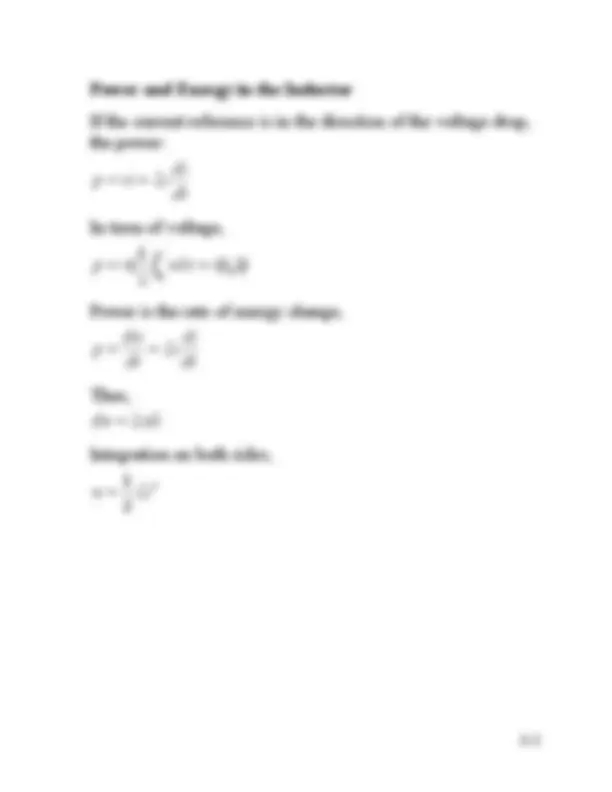
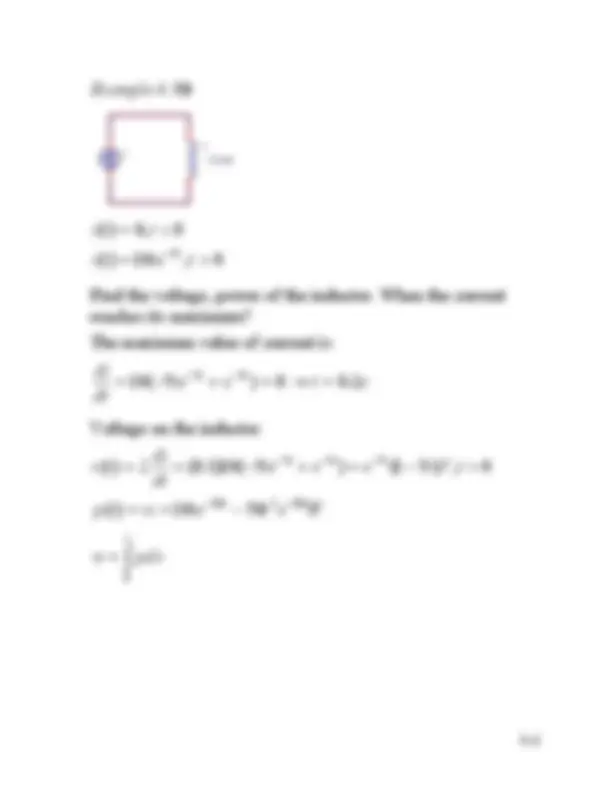
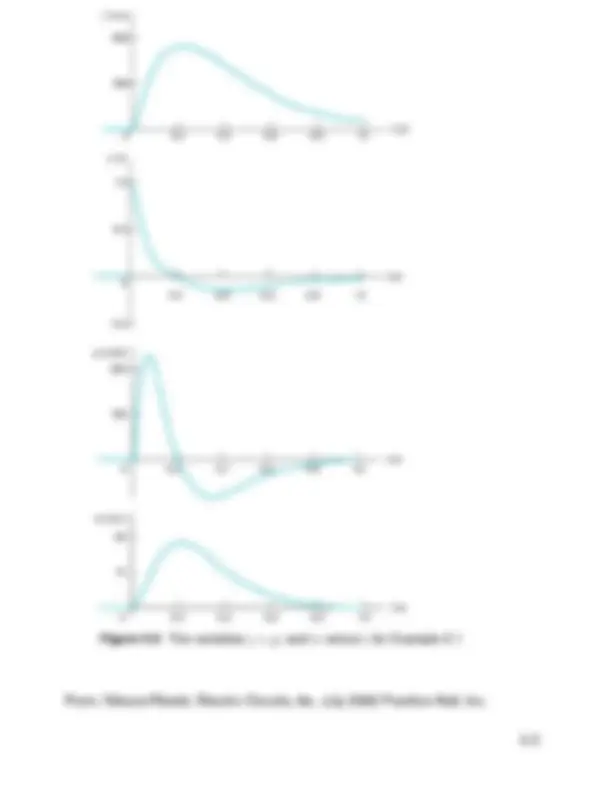
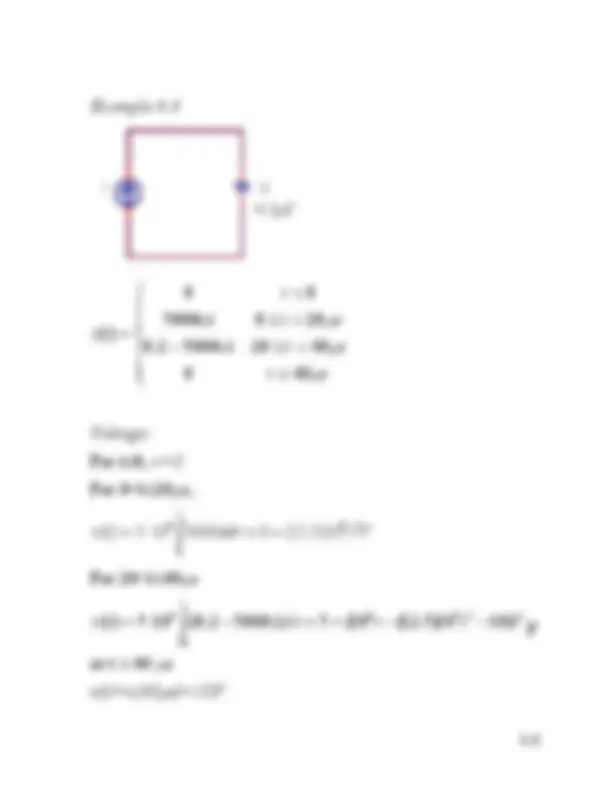
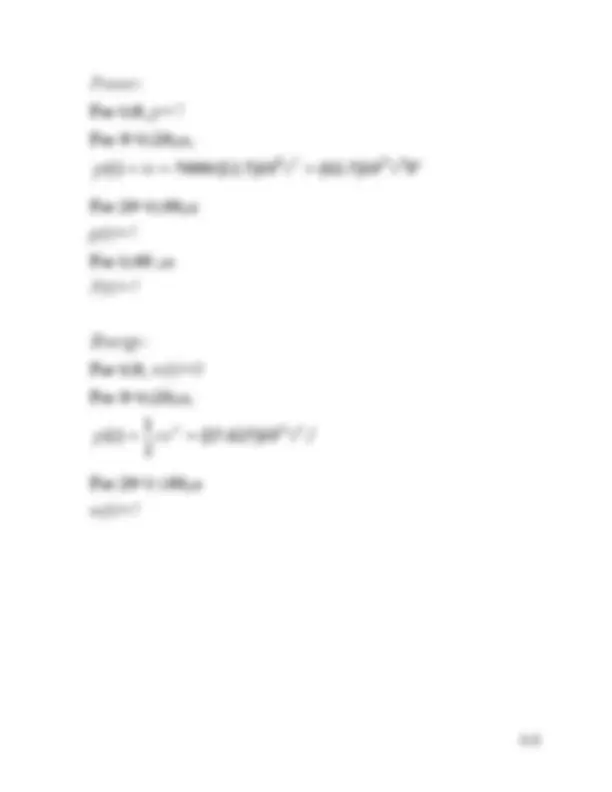
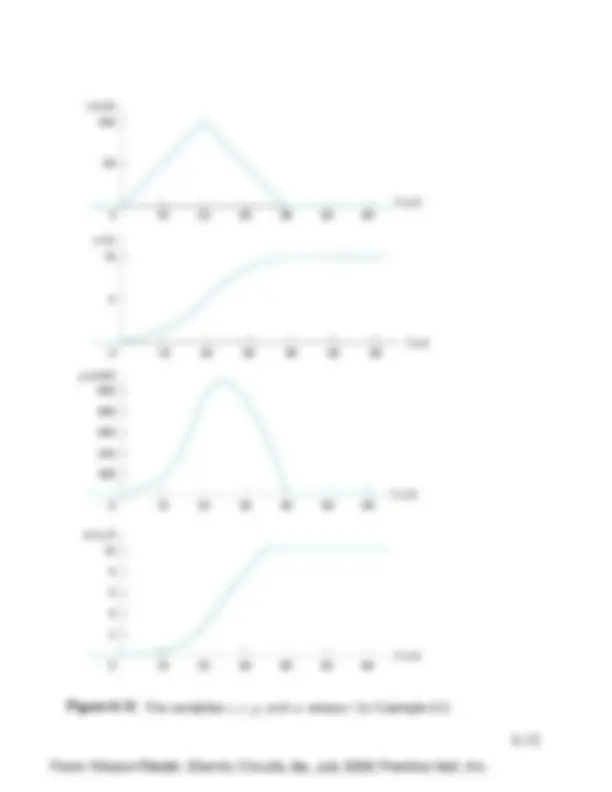

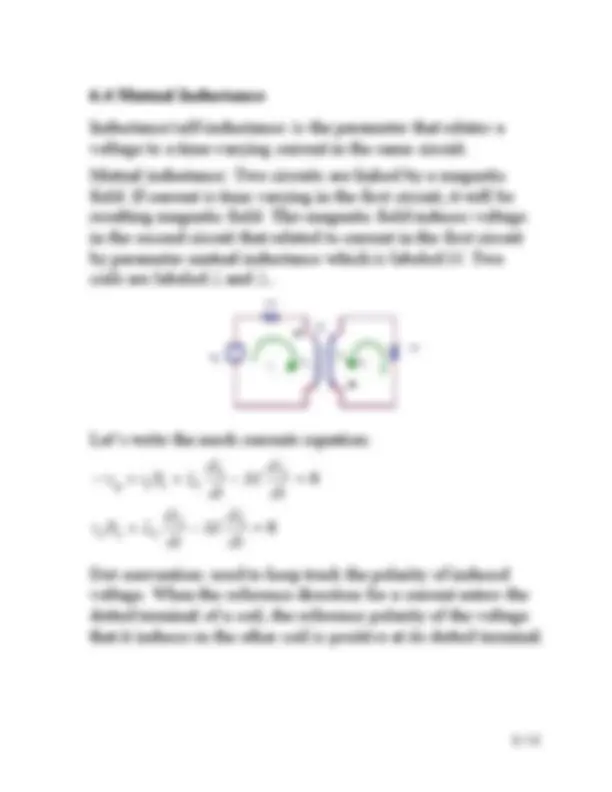
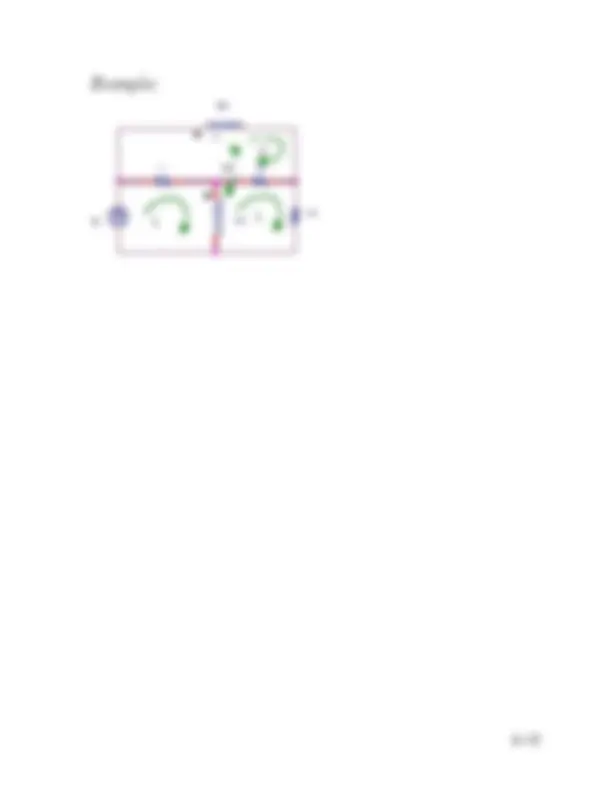


Study with the several resources on Docsity

Earn points by helping other students or get them with a premium plan


Prepare for your exams
Study with the several resources on Docsity

Earn points to download
Earn points by helping other students or get them with a premium plan
Community
Ask the community for help and clear up your study doubts
Discover the best universities in your country according to Docsity users
Free resources
Download our free guides on studying techniques, anxiety management strategies, and thesis advice from Docsity tutors
An introduction to inductors and capacitors as essential passive elements in electrical circuits. Inductors, represented by the symbol l, are composed of a coil of wire and can store energy. Capacitors, represented by the symbol c, consist of conductors separated by an insulator and can store electrical charge. The relationship between voltage and current, power, and energy in both components, as well as their classification as passive elements. It also introduces the concept of mutual inductance, where two circuits are linked by a magnetic field.
Typology: Study notes
1 / 15

This page cannot be seen from the preview
Don't miss anything!










Two new circuit elements
Inductor
An inductor is an electrical component that opposes any
change in electrical current. It is composed of a coil of wire
wound around a supporting core. An inductor can store
energy.
Capacitor
A capacitor is an electrical component that consists of two
conductors separated by an insulator or dielectric material. A
capacitor can store electrical charge.
Inductors and capacitors are classified as passive elements
and they cannot generate energy.
6.1 Inductor
The symbol for impedance is L and measured in henrys [H].
The relationship between the voltage and current at the
terminals of an inductor:
t
t
vd i t L
i t
dt
di v L
0
inductor is zero
Example 6.1a
For t<0, i(t)=
For 0<t≤1,
i t d i t
t
0
For 1<t≤2,
1
i t d i t
t
τ
Example 6.1b
5 = >
− i t te t
i t t
t
Find the voltage, power of the inductor. When the current
reaches its maximum?
The maximum value of current is:
te e t s dt
di (^) t t 10 ( 5 ) 0 0. 2
5 5 = − + = → =
− −
Voltage on the inductor
5 5 5 = = − + = − >
− − − te e e t V t dt
di v t L
t t t
p t vi te t e W
10 t 2 10 t ( ) 10 50
− − = = −
t
w pd
0
Figure: The variables for example 6.1b
6.2 Capacitor
It is represented by C and is measured in farads (F). The
relationship between the voltage and current at the terminals
of a capacitor:
0
id v t C
v t
dt
dv i C
t
t
The power is:
dt
dv p = vi = Cv
The energy is:
2
2
w = cv
its terminal voltage.
circuit.
current.
Example 6.
t s
tA t s
tA t s
t
i t
Voltage:
For t≤0, v=
For 0<t≤ 20 μs,
v t d t V
t
= ⋅ + =
0
6 9 2 ( ) 5 10 5000 τ τ 0 ( 12. 5 ) 10
For 20<t≤ 40 μs
v t d t t V
t
( ) 5 10 ( 0. 2 5000 ) 5 ( 10 ( 12. 5 ) 10 10 )
20
6 6 9 2 = ⋅ − + = − −
or t ≥ 40 μs
For t≥ 40 μs
w(t)=?
Example 6.
t
t t
t
i t
For t<
−∞
t
i d C
For 0 ≤ t<
2
0
2
0 0
t t i d d C
v t v
t
t t
= + = + = =
For t≥ 2
2
2
2
t t
i d d C
Capacitors in serial
Total capacitor value:
t
t
i d v t C
v t
0
0
1 2 3
τ τ
Capacitors in parallel
Total capacitor value:
dt
dv t i t C
1 2 3
6.4 Mutual Inductance
Inductance/self-inductance: is the parameter that relates a
voltage to a time-varying current in the same circuit.
Mutual inductance: Two circuits are linked by a magnetic
field. If current is time varying in the first circuit, it will be
resulting magnetic field. This magnetic field induces voltage
in the second circuit that related to current in the first circuit
by parameter mutual inductance which is labeled M. Two
coils are labeled L 1 and L 2.
Let’s write the mesh currents equation:
2 1 2 2 2
1 2 1 1 1
dt
di M dt
di i R L
dt
di M dt
di v (^) g iR L
Dot convention: used to keep track the polarity of induced
voltage. When the reference direction for a current enters the
dotted terminal of a coil, the reference polarity of the voltage
that it induces in the other coil is positive at its dotted terminal.